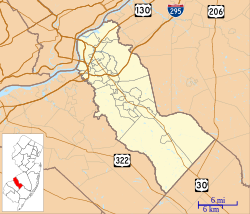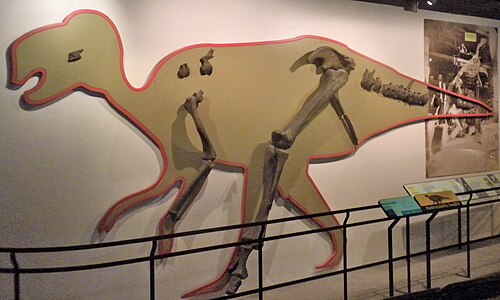Hadrosaurus foulkii Leidy Site | |
 Marl pit at the site, in which the bones were found | |
| Location | Haddonfield, New Jersey, USA |
|---|---|
| Coordinates | 39°54′37″N75°01′43″W / 39.91018°N 75.02856°W |
| Area | 4 acres (1.6 ha) |
| Built | 1858 |
| NRHP reference No. | 94001648 |
| Significant dates | |
| Added to NRHP | October 12, 1994 [1] |
| Designated NHL | October 12, 1994 [2] |
The Hadrosaurus foulkii Leidy Site is a historic paleontological site in Haddonfield, Camden County, New Jersey. Now set in state-owned parkland, it is where the first relatively complete set of dinosaur bones were discovered in 1838, and then fully excavated by William Parker Foulke in 1858. The dinosaur was later named Hadrosaurus foulkii by Joseph Leidy. The site, designated a National Historic Landmark in 1994, is now a small park known as "Hadrosaurus Park" and is accessed at the eastern end of Maple Avenue in northern Haddonfield. [3]




